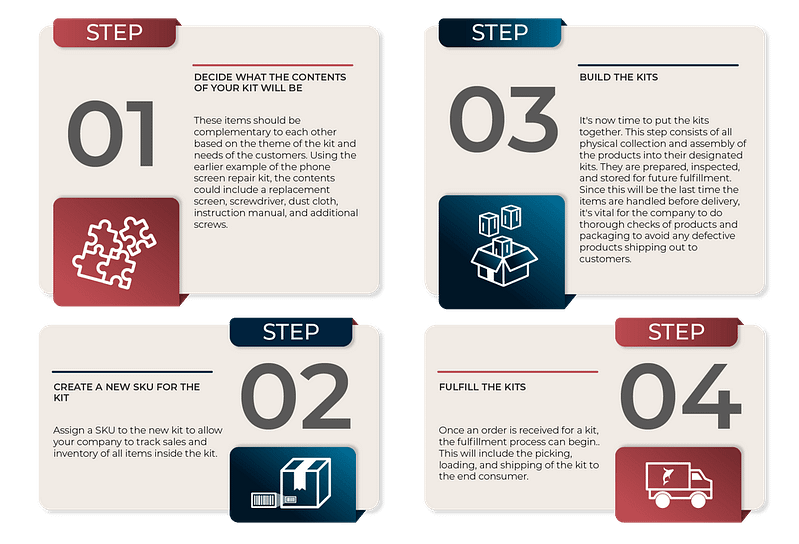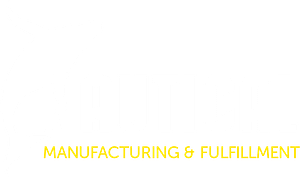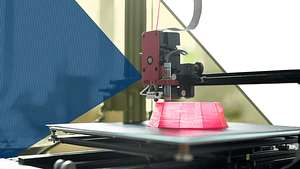To remain competitive and provide the best customer experience, companies need to continually evaluate inventory management procedures to reduce turnaround time for product orders and delight consumers. Among the new fulfillment techniques that have spiked in popularity in recent years, kitting may provide the most utility due to how versatilely it can be applied in supply-chain management.
Fueled in part by the rapid growth of the eCommerce industry, kitting is now one of the most commonly used services in online retail and omnichannel fulfillment. Retailers, suppliers, and subscription services incorporate kitting to improve margins by reducing shipping costs. Excelling at the kitting process can greatly enhance a company’s product presentation, customer satisfaction, operational efficiency, and customer loyalty.
What Is Kitting?
Also called full kitting, kitting is a fulfillment service that includes combining related items into “kits” that will be fulfilled together to the end consumer. There are different types of kitting, depending whether it happens upstream (earlier) in the supply chain process, during production, to aid in manufacturing or in preparation of fulfillment, or downstream (later) at a 3PL center after an order is received and needs to be packed. Kitting can even be used in multiple parts of the supply chain to improve operational efficiency and lower logistical costs. Most commonly, kitting refers to the process of combining multiple different items into a single shipping unit at a fulfillment center and listing them under one stock-keeping unit (SKU).
Think about the last time you went on a trip. You likely packed your shirts and slacks from your closet, your socks and undergarments from your dresser, and your shoes, toiletries, and other miscellaneous items from other locations—all into your luggage. In the act of packing for your trip, you combined related items together into a travel kit.
The most common benefit of kitting is that it allows a business to pre-bundle items together and avoid needing to assemble them individually once an order is placed, saving valuable order shipping time.
Kitting in Manufacturing
In manufacturing, kitting is an inventory management practice that involves assembling all the components that a worker needs to complete a task. Organizational competency is required to fabricate high-quality products at consumer-friendly prices, and kitting is often used to help reduce production complexity, in turn lowering costs to the purchaser. Kitting is particularly useful in make-to-order products, where several components can be pre-assembled before the final product is customized to the customer’s specifications. Kitting helps reduce order turnaround time on complex, often personalized products that may come in many different varieties or styles—a business necessity in today’s highly customer-centric world.
Kitting in Order Fulfillment
In order fulfillment, kitting is a shipping and warehousing practice of combining multiple individual, related SKUs together into a new SKU, which is then packaged and shipped as a single unit. It has become popular with the rise of large online retailers like Amazon.
Subscription boxes are a popular example of kitting. These kits typically include products from several manufacturers, which are combined into a single bundle rather than sold individually. Barkbox is a popular subscription box for pet owners that combines dog toys, treats, and other pet-friendly items into a bundle. This approach can increase the overall value of the bundle while helping move inventory of items that may not turn over as quickly individually.
A gadget company has a repair kit for cell phone screens. The kit will contain all the necessary materials, parts, and tools needed for a consumer to replace their phone screen at home.
Example of Kitting
What’s the Difference Between Kitting and Assembly?
Kitting and assembly are often used interchangeably. However, assembly involves making changes to the product itself, as in the case of a build-your-own furniture item, where the assembler is altering components of the product to form a completed piece of furniture. By contrast, kitting simply consists of combining multiple different products together creating a bundle.
What are the Different Types of Kitting?
Product Kitting
The most common form of kitting used in order fulfillment. Product kitting can be part of manufacturing or order fulfillment processes, with the resulting kit being sold together as a bundle, typically under a single SKU.
When a 3PL performs this type of kitting, it can sometimes be called warehouse kitting. Depending on the size and duration of the kitting project, some 3PLs have dedicated kitting stations in their warehouse. For smaller projects, the kitting process can happen at the packing station as customer orders are being fulfilled.
A subscription box that includes razors and shaving cream and is sent to a customer on a recurring basis is another example of product kitting. Some popular subscription boxes include Dollar Shave Club, BarkBox, and The Hut.
Pre-Kitting
Pre-Kitting involves combining Items at the end of the manufacturing process before sending them to third-party logistics (3PL) companies to store and fulfill. Because pre-kitting happens during production, this method can help producers save on outsourcing costs. When an order is placed, the picker at the 3PL will only be required to pick a single SKU rather than multiple SKUs, and packing for shipment will be greatly simplified as pre-kitting allows for packing ahead of time rather than the 3PL being required to pack at the time of the order.
Just-In-Time Kitting
JIT kits can be assembled in warehouses, fulfillment centers, or factories, and are distributed as needed to the next part of the supply chain. In manufacturing, JIT kitting allows a company to improve efficiency by minimizing delays in the manufacturing process and reducing material handling assembly time and carrying costs. In order fulfillment, this type of kitting helps companies meet demand by allowing them to sell and ship individual items under their original SKUs or as kitted bundles on demand.
Material Kitting
Material kitting is a type of manufacturing kitting that involves assembling raw materials and components put together to be used in a final product. Material kitting is not packaged in a set to be sold to a consumer, instead they usually consist of parts that are needed for a specific point in the manufacturing process. Material kitting is often used to improve assembly line throughput time and reduce errors during manufacturing and assembly.
Promotional Fulfillment
Promotional kitting, or promotional fulfillment, involves combining products with marketing materials, such as product samples or coupons, to promote future sales. A company may also kit underselling items or surplus stock into bundles that a customer is more likely to buy, helping free up warehouse space in addition to increasing the value to consumers.
Private Label Kitting
Private label kitting combines several products from different manufacturers into a single kit under one brand. It is commonly used alongside subscription boxes to offer compelling experiences to consumers while helping manufacturers large and small move more product.
On-demand Kitting
On-demand kitting allows a customer to build their own kit online and personalize their order to their specific selections. Because of the level of customization, these kits aren’t assembled until a customer orders one.
The Product Kitting Process
Step One: Decide on the content of the kit
Decide what the contents of your kit will be. These items should be complementary to each other based on the theme of the kit and needs of the customers. Using the earlier example of the phone screen repair kit, the contents could include a replacement screen, screwdriver, dust cloth, instruction manual, and additional screws.
Step Two: Create a new SKU for the Kit
Assign a SKU to the new kit to allow your company to track sales and inventory of all items inside the kit.
Step Three: Build the Kits
It’s now time to put the kits together. This step consists of all physical collection and assembly of the products into their designated kits. They are prepared, inspected, and stored for future fulfillment. Since this will be the last time the items are handled before delivery, it’s vital for the company to do thorough checks of products and packaging to avoid any defective products shipping out to customers.
Step Four: Fulfill the Kits
Once an order is received for a kit, the fulfillment process can begin. This will include the picking, loading, and shipping of the kit to the end consumer.

Benefits of Kitting
Incorporating kitting techniques and services provide several benefits to business partners, internal teams, and end-user consumers.
Improved Warehousing
When products are kitted and stored in a warehouse, they typically use less rack space when compared to storing individual non-kitted items. This reduces storage costs and frees up pallet space.
Additional Inspection Point
Even when working with a manufacturing partner with robust quality control systems and procedures in place, mistakes can happen. Kitting processes can provide an additional inspection point to catch manufacturing issues.
Faster Fulfillment and Shipping
Because a kit already contains all the necessary items, picking these orders takes less time than other methods. The warehouse staff picking the order only have to go to one location of the warehouse and pick a single item, saving time and reducing pick errors.
These time savings lead to faster shipping turnaround. In addition, since certain kitted items may already be packaged for shipment,shipping prep times can be reduced even further.
Increased revenue and Customer Experience
Kitting can influence a customer’s purchase behavior and help increase average order volume. Since a bundle combines multiple items into a single order, customers may perceive a higher overall value or convenience factor associated with the kit. The curated nature of kits allows a company to group products in ways that customers are more likely to engage and form positive experiences with. Even packaging can play a role, as customers delight in engaging unboxing experiences that further solidify brand affinity.
Finding the Right Kitting Service Providers
Although there are many 3PLs in the United States, not all are the same. This means that it’s important to do research before choosing a service provider that can execute your kitting projects.
Service Offerings: This should be the main priority for any business looking for a third-party partner. You should make sure that the 3PL provides all the kitting services that your company may need. Review the different kitting types above and make sure to ask the 3PL if they have those capabilities.
Location: Having your kits in a strategic location in relation to your customers can increase their satisfaction greatly due to shorter shipping times and lower shipping costs.
Warehouse Space: Although kitted products take up much less space than normal palletized products, it is still vital to make sure your warehouse provider has enough space for when your business needs to scale operations.
Luckily, Nautical has everything a business would want from a kitting partner. With a centrally located fulfillment center in the United States, we provide our customers with perfectly kitted products and fast fulfillment to anywhere nationwide. Make sure to reach out to us first if you are looking for a kitting service provider.




